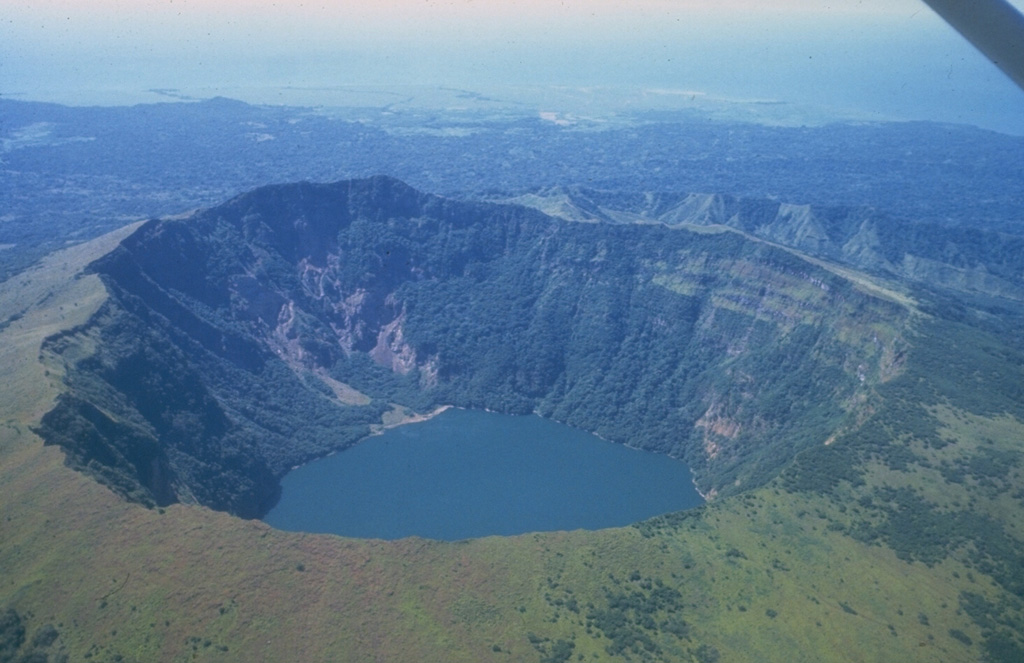Image GVP-04083

Cosigüina, seen here from the east, is a low basaltic-to-andesitic composite volcano that forms a large peninsula at the NW tip of Nicaragua along the Gulf of Fonseca. The 872-m-high volcano has a pronounced somma rim, which forms the ridge seen here at the right behind the far crater rim. The younger cone is truncated by a large elliptical prehistorical summit caldera 2 x 2.4 km in diameter and 500 m deep, which is now filled by a lake. It was the source of a major explosive eruption in 1835, Nicaragua's largest during historical time.
Photo by Jaime Incer, 1981.
![]() This image is made available under the Creative Commons BY-NC 4.0 license terms.
This image is made available under the Creative Commons BY-NC 4.0 license terms.

Cosigüina
